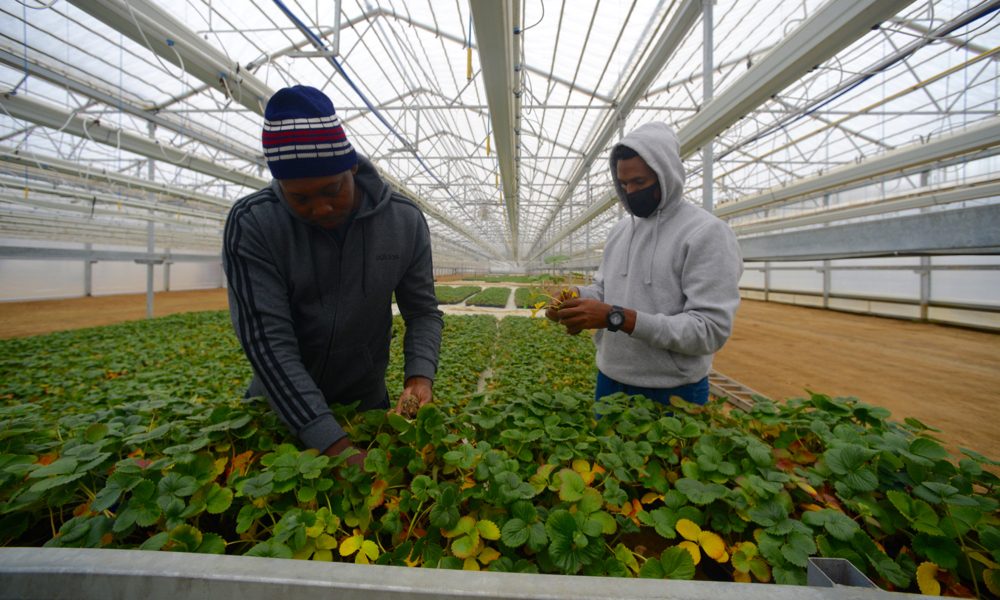Vegetable group lobbies for TFW quarantine fund

Temporary Foreign Worker quarantine costs continue to climb while federal support programs wind down, leaving farmers on the financial hook.
“This is costing midsize family farms anywhere from $50,000 to $100,000 to $150,000 and upwards of that for the real large producers,” said Bill George, Ontario Fruit and Vegetable Growers Association (OFVGA) chair.
“There is not the capacity in the industry to absorb those costs. Full stop. It is just not there.”
Why it matters: The pandemic has forced new costs into the food production system and that has made it challenging for farmers.
Growers face increased costs around TFW quarantine protocols, and COVID-19 testing delays have affected production and planting schedules. Despite the increased burden, the federal government has announced that funds for the Mandatory Isolation Support Program for Temporary Foreign Workers Program will end Aug. 31.
The program, initiated in April 2020, offered up to $1,500 in expense reimbursements to farmers, to alleviate the costs of having workers in 14-day quarantine while the Quarantine Act was in place.
A year later, the Liberal government announced funding would roll back to $750 on June 16 and end on Aug. 31. The $2,000 non-repayable contribution to cover three-day hotel quarantine stays will also be terminated.
“The federal government’s Quarantine Act has imposed substantial additional costs on the employers of TFWs, and the (support program) has offset many of those costs, which cannot be recovered through the marketplace,” said George.
“We agree that pandemic-related programming will need to come to an end but expect the sunset of this funding support to align with the end of the quarantine requirement, and not before.”
A federal Agriculture and Agri-Food spokesperson said the government supported farmers throughout the pandemic and dispensed more than $100 million to farm operations through the TFW isolation support program.
With the rise in Canadian vaccination rates and an end to the crisis in sight, the spokesperson said this program and several others would cease near the end of summer once most TFWs have arrived for the season.
Other financial supports will be available to farmers, including business risk management programs, said the spokesperson.
“(Our apple producers) start to bring in their harvest crews mid-August and into September, so certainly they will be disproportionately affected by this,” said George. “As well as a lot of greenhouse operations are bringing in workers all year long. It puts some individuals at a bit of a disadvantage or competitive disadvantage.”
The OFVGA delivered a preliminary report on the financial impact of TFW quarantine protocols to Agriculture and Agri-Food Minister Marie-Claude Bibeau in early May. It said maintaining the funding for the entire 2021 season is critical.
On average, farmers are paying $1,747 per worker quarantined in on-farm housing for 14 days. That amount already exceeds the $1,500 in program funds. The costs climb if alternative housing options, such as temporary trailers and bunkies, are brought in to accommodate more workers on the farm.
Those who used hotels to meet the Ontario TFW quarantine protocols paid $3,125 per worker for 14 days. That includes wages, meals, rooms, utilities and costs related to testing.
If the quarantine extends past 14 days, which can occur due to testing, delays or contact tracing, the cost climbs by $113 per worker per day on-farm or $223 per worker per day at a hotel.
George said the OFVGA report presented a case to increase, not cease, assistance through a two-tiered system where operators with on-farm quarantine would be eligible for up to $1,700 and hotel quarantine costs up to $3,000 would be reimbursed.
Additionally, it suggested a supplement of $220 per worker per additional day of quarantine and a one-time payment of $150 per worker for costs associated with the Day 10 COVID test.
George said some growers have already borrowed against property, used personal lines of credit, dipped into savings and put expansions on hold to support the workers. Without funding programs, growers face increased debt.
“We’re producing food for Ontarians and we have to be financially sustainable doing that, whether it’s during pandemic years or a normal growing season,” he said.
Keith Currie, first vice-president of the Canadian Federation of Agriculture, said the cost of locally grown food may rise as a result.
“This is a food security issue,” he said. “We just need the government to work with us, and work with all relative groups, to make this continue to happen.”
Ontario, Quebec and British Columbia, the top horticulture areas in Canada, are dealing with COVID-19 variants and that adds to the logistical nightmares of getting TFWs safely into the country, through quarantine and into the field.
“If this isn’t resolved, those costs are still there,” Currie said. “Those are huge costs the government is not paying attention to even though lots of organizations have brought those facts to the government.”
TFWs are integral to ensure the food supply chain runs smoothly to provide Canadians with a safe, affordable and ample supply of food, he said, and agriculture plays a significant role in the national economy.
“We’ve shown in the last year we’ll do whatever it takes to make sure that we keep people safe. Not just foreign workers, but domestic workers too,” Currie said. “We’re doing everything right, we’re following all the protocols. It’s just (that) our farmers can’t afford to do it on their own dime.”
Source: Farmtario.com

